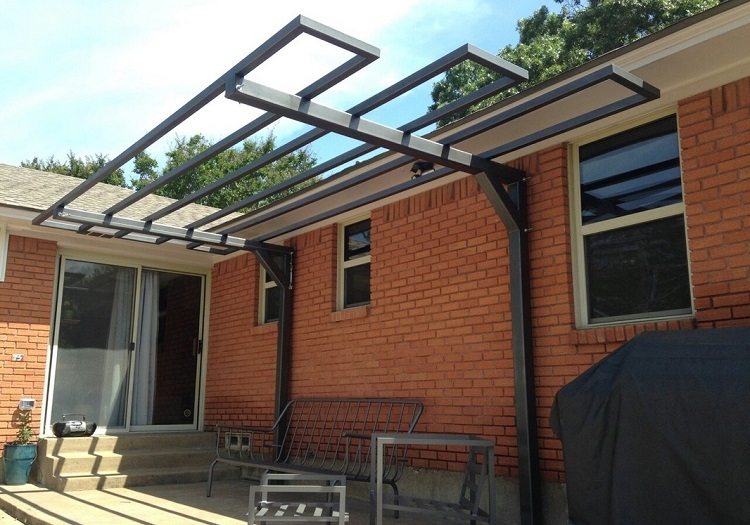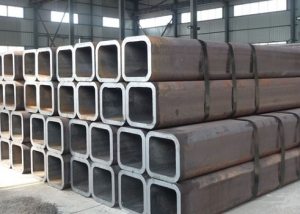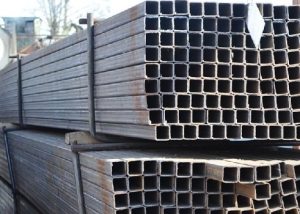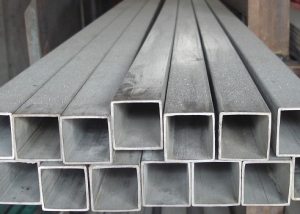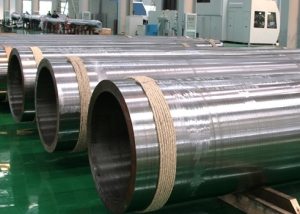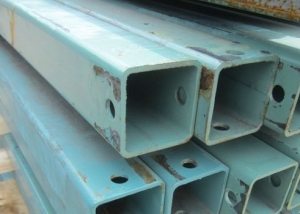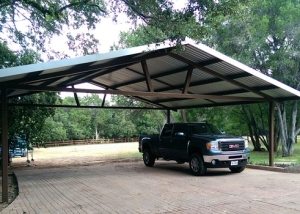Pipes of square and rectangular cross-section are light, but durable elements of profile structures. They are widely used in the construction of the bearing foundations of residential buildings, as well as household structures. To determine the standards and assortment of steel square pipes, GOST 30245 2003 (abbr. - 03) was introduced, which was previously designated as GOST 30245 94. The standard includes the main provisions regarding the production and quality of square pipes.
Content
- 1 The range of steel and rectangular pipes according to GOST 30245 03 (94): scope
- 2 Limit deviations of steel rectangular pipes according to GOST 30245 2003 (94)
- 3 Technical requirements for the assortment of steel square pipes in accordance with GOST 30245 94
- 4 Method for the production of steel pipes according to GOST 30245 2003 (94)
The range of steel and rectangular pipes according to GOST 30245 03 (94): scope
Profile products have a sufficient variety, which determines their application in various industries:
- Due to the small cross-sectional size, square steel pipes from the 25x25 profile are used in shipbuilding and machine-building fields. Products with a small cross section have good tightness, lightweight and durable;
- For the construction of temporary and prefabricated structures (warehouse pavilions, hangars, greenhouse premises), profile rectangular pipes 40x60 are used. They are easy to install and easy to demolish, fracture resistant and relatively light in weight;
- frames for the installation of advertising structures and partitions in residential premises, as a rule, are installed using rectangular steel pipes 60x30. Approximately the same metal content as in the previous version, combined with even less weight;
- special sizes, such as 25x250, are used in the installation of heavy structures, indispensable for large vessels and construction equipment.
To install massive structures, for example, multi-storey residential buildings, profile pipes with a diameter of 100 mm or more can be used. Using smaller sizes for these purposes is irrational.
Limit deviations of steel rectangular pipes according to GOST 30245 2003 (94)
The length of the profile and the cross-sectional area of the pipe are determined by special tables included in the structure of any GOST.
Deviation in the wall thickness of the profile pipe is one of the most important indicators of its quality. The range of GOST 30245 94 sets the following standards:
- The maximum deviation across the width of the steel profile is allowed from 0.5 mm to 1 mm for pipes with a width of less than 100 mm. Rectangular shaped or square steel pipes, the profile of which is wider than 100 mm, can have a maximum deviation of up to 0.8 mm per linear meter. To measure the deviation, initial blanks with a width of 12.5 cm are used with normal accuracy.
- Sometimes there is a concavity or convexity of the pipe walls, but not more than 1% of their thickness.
- The steel square profile pipe GOST 30245 2003 (94) when cutting should have a deviation of not more than 1.3 degrees from 90 degrees in the angular segment of the supporting structure.
- Relative to the longitudinal axis of the product, slight twisting can be observed, but not more than 2 mm deviation from a flat line per linear meter. When measuring finished structures from profile pipes, the deviation from the axis in both horizontal and vertical should not exceed 1 mm.
- The range of rectangular steel pipes corresponding to the provisions of GOST 30245 03 (94) is available in measured lengths from 6 to 12 meters. Lengths may vary. To order a different measured length, you must submit an application directly to the manufacturer. But even in this case, the sections of profile pipes cannot have a length of less than 4 m and more than 13 m.
- Products from profile hire made in accordance with GOST 30245 03 (94) must not have any external damage. Their surface should be smooth, without roughness, cracks, furrows and scuffs.

According to GOST, the length of the finished pipe should not exceed 12 m, for individual orders this parameter increases to 13 m
Important! The list of limit deviations does not take into account the places of profile bends. In these places, a significant thickening of the pipe wall can be observed, and this will not be considered a deviation.
For the presence of deviations in geometry, the profile square products are tested using the MTs-3 caliper, angular and radius templates, goniometers and RZ-20 roulette.
Technical requirements for the assortment of steel square pipes in accordance with GOST 30245 94
Along the entire length of the profile product, the weld should be welded as reliably and efficiently as possible. Non-digested areas worsen the strength characteristics of products. For 1 running meter, the presence of 50 mm of lack of penetration is permissible (total value). But a single uncleared portion should not exceed 20 mm in length. When testing for tearing, the weld should provide 95% resistance to metal.
GOST 30245-2003 (94) defines the conventions for the assortment of steel rectangular pipes (PP). For a rectangular pipe with a measured length of 6000 mm and a cross-sectional size of 300x100x6 mm, made of ordinary steel with strength class KP245 (corrosion metal resistance is marked with the letter K), the marking will look like this:
PP - 300 x 100 x 6 x 6000 - KP245 - K - GOST 30245 2003 (03)
For products of unmeasured length, the legend will be the same, with the exception of length indicators:
PP - 300 x 100 x 6 - KP245 - K - GOST 30245 2003 (03)

Like other pipe products, square pipes are marked and each product contains information about its parameters
Thus, the marking includes the designation of the shape of the cross section of the profile, the length and dimensions of the profile, the grade and grade of steel and the corresponding GOST. Delivery in large quantities involves marking the number of profiles and their mass. The radius of the external rounding of square or rectangular pipes is selected from the parameters indicated in the table.
Table 1
| t mm | Rated r |
| until 6 | 1.6t to 2.4t |
| 6-10 mm | 2t to 3t |
| From 10 mm | 2.4t to 3.6t |
Method for the production of steel pipes according to GOST 30245 2003 (94)
The production process is strictly regulated by the theses of GOST 30245 2003. In addition to the procedure for manufacturing steel square pipes, the material for molding is also determined. High-quality steel profile pipe is made from rolled sheet metal supplied to the workshop in rolls.
Its varieties may be as follows:
- carbon and low alloy steel grades with a thickness of 3 mm or more;
- carbon steel with rolled thickness equal to or greater than 4 mm;
- carbon types of steel grades 20, 15 and 10;
- low alloy steels with a thickness of 4 mm or more.
Production is carried out from cut longitudinal stripes of sheet steel. First, the workpiece takes a cylindrical shape, then, when rolling through the rollers, it is deformed to an angle of 90 degrees. The joint seam is evenly boiled on a special machine, after which the seam is cleaned from sharp edges and deposits.
Transverse seams can be welded semi-automatically in case of defects, but provided that equal strength along the entire length of the connection. The place of the seam is marked with indelible paint.
Important! When processing the ends of pipe segments used in the construction, the method of fire cutting is allowed. But the number of products processed in this way should not exceed 7% of the entire batch.
Also, the manufacturer, in accordance with the order conditions, takes additional measures:
- descaling surface of profiles;
- marking data;
- temporary conservation coating against corrosion, sorting finished products into containers with sprayed anti-corrosion inhibitors.
Compliance with the parameters regulated by GOST 30245 03 (94) is a prerequisite for the optimal quality of profile products. Structures built from elements of this production category can ensure long-term operation. A manufacturer whose product range meets the technological standards of these standards is required to provide a long-term guarantee (24 months) for all types of products.

